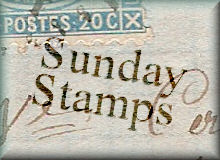However, on one hand, I do not collect EUROPA stamps, on the other, Macedonia still hasn't issued this year's stamps, even though they were scheduled for April...but luckily, Macedonia did once issue some musical instruments on stamps, so here they are for my entry today.
There are four stamps in the set, issued February 19, 2003.
first is the 9 denar stamp, showing гајда, (gajda=, which is a bagpipe from the Balkans and Southeast Europe
Gajda bags are generally of sheep or goat hide. Different regions have different ways of treating the hide. The simplest methods involve just the use of salt, while more complex treatments involve milk, flour, and the removal of fur. In the Macedonian regions, the hide is normally turned inside out so that the fur is on the inside of the bag, as this helps with moisture buildup within the bag.
the next, 10 denar stamp shows a тамбура (tambura) - s a stringed instrument that is played as a folk instrument in Macedonia and Bulgaria. It has doubled steel strings and is played with a plectrum, in the same manner as a mandolin.
The Macedonian tambura has 4 steel strings in 2 doubled courses. It is tuned D D, A A or another pitch but at the same relative intervals of a fifth. Sometimes octave strings are used on the lower course. It has a floating bridge and a metal tailpeice. The instrument body is more often made from staves like a lute.
The 20 denar stamp shows a 'ќемене' (kemene), a three or four-stringed musical instrument that has the shape of a pear, and play with a fiddlestick over the strings, in order to play some music. It is thought that the origins of the word kemene come from the countries of Turkey, Iran, Syria, Saudi Arabia....
the last stamp of the set is this 50 denars one (yeah that one is a bit pricey so I have only one :)) and it shows a тапан (tapan), which is a drum used in the Balkan and Turkish music. (it is a large double-headed drum that is played with mallets). These drums are commonly used in the folk music of Iran and Turkey, as well as Romania, Bulgaria and the Republic of Macedonia, portions of Greece and Serbia, as well as Iraq and Armenia. These drums have both a deep bass sound and a thin treble sound due to their construction and playing style, where different heads and sticks are used to produce different sounds on the same drum.
In the southern Balkans, the rhythm of the tapan is complex and utilizes many accents in numerous traditional time signatures. In Macedonia, tapans are most often used to accompany other instruments such as the zurla and gaida, while in Bulgaria they usually accompany gaida and gadulka. They are also played solo in some Bulgarian and Macedonian folk dances and songs. For centuries the tapan is irreplaceable at Macedonian and Bulgarian village festivities such as weddings and celebrations of patron saints of homes and villages. Players often use a rope hooked to the drum to hold the drum sideways, so that one head is accessible with the left hand and one with the right. Each hand is usually dedicated to playing one side of the drum exclusively, though this can vary by local style and tradition.
well, I hope you got to see and learn something new today. I almost missed this entry due to overall feeling of slow-motion and a bunch of work..
For some more music, tune in over at Viridian's!






A marvelous variety of instruments, you've got a full band here. I saw pictures of this year's Macedonian europa stamps and miniature sheet on europa-stamps.blogspot.com and there is just a question mark against the date of issue, I wonder what happened. Our post once pulled a set of stamps from the schedule and then issued them the following year and never explained why. Not a thing you can do with Europa stamps though.
ReplyDeletei would love to hear these instruments next time i'm in macedonia...kemene looks exactly like lijerica from croatia's europa stamp
ReplyDeleteNice stamps!
ReplyDelete